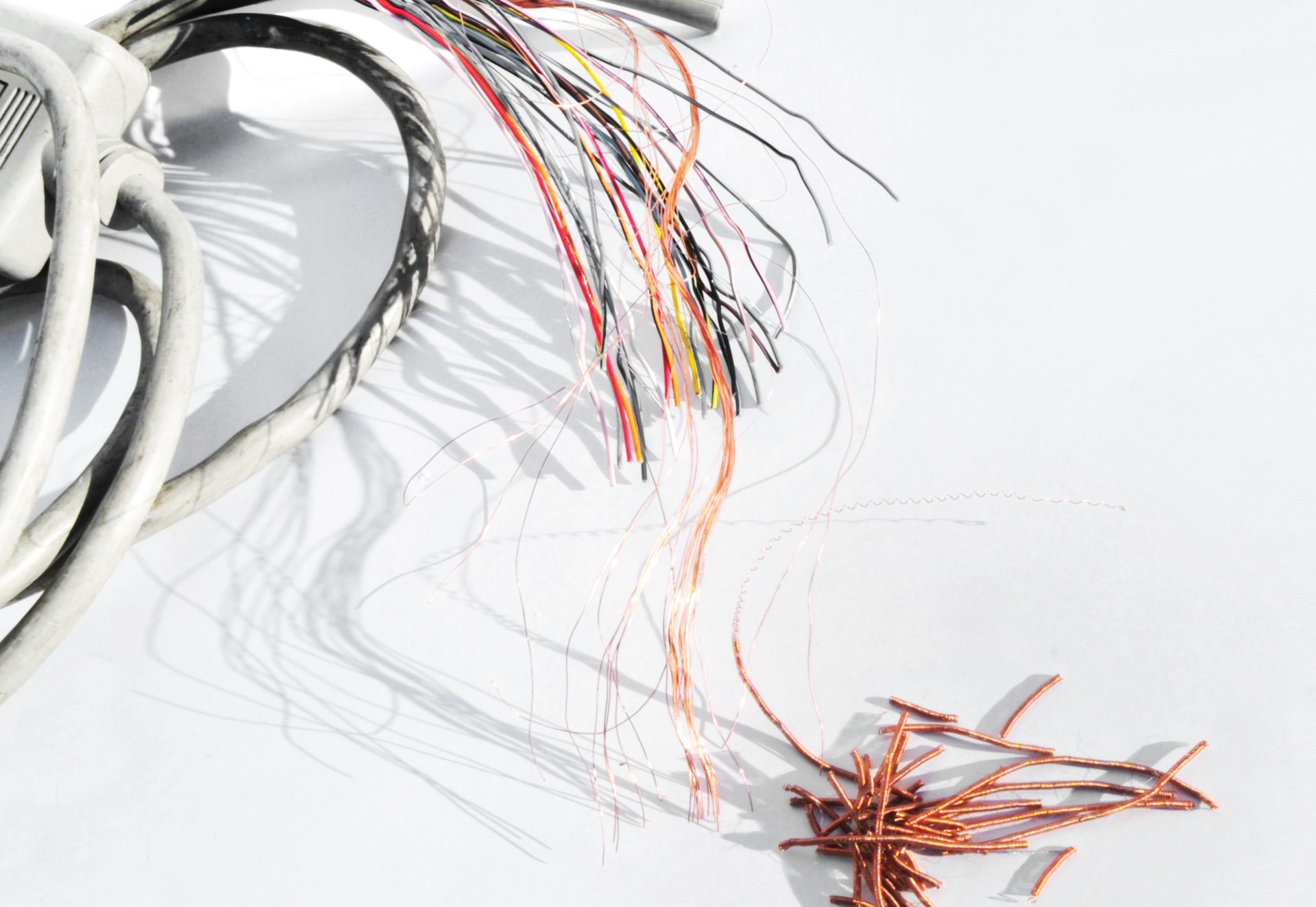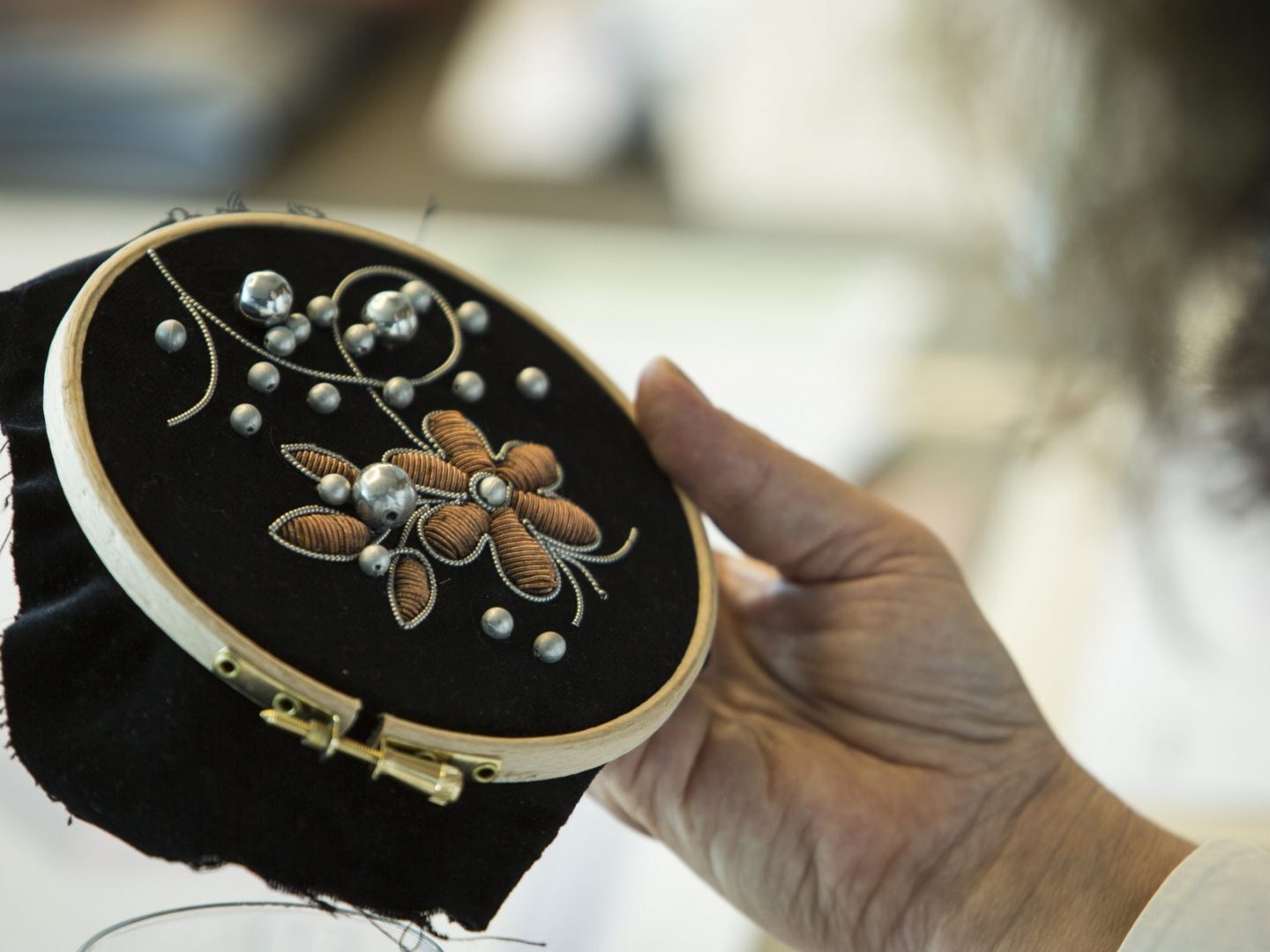

Aniela Fidler approached Hand & Lock in March 2018 to help her explore her vision for creating embroideries using recycled electrical wiring. Her project centred on sustainability in fashion design and subsequently won the Kering, Alexander McQueen Award for Innovation. Here we wanted to learn more about the process and share her design story with you.
Please tell us a little about the Kering competition, your entry and the inspiration behind it?
The Kering Award for Sustainable Fashion is a partnership between Kering and the Centre for Sustainable Fashion from London College of Fashion. Each year there are two brands from Kering group that create brief for students to work on and develop a project that addresses a specific issue. I worked on concept for Alexander McQueen and became inspired by the extensive use of goldwork embroidery in very innovative way. McQueen has a long history of merging tradition with its inversion. Electronic waste is a very contemporary problem therefore I saw it as a perfect contrast. I wanted to empower the Indian community to fight their electronic waste issue through heritage craft.
You were born in Poland but now live in the UK – How do attitudes to sustainability differ between the two countries?
In both countries people are waking up to climate change and its issues. In my opinion the main difference between the UK and Poland is the level of consumption. Because the Polish economy is not as strong as British, we automatically don’t buy as much.
Do you believe embroidery is compatible with sustainability?
I think embroidery, especially handmade, has a lot of sustainability values naturally embodied because it is a slow process. Nonetheless, high street brands sell sequin and bead embellished garments for bargain prices even though, both of these techniques can’t be fully machine performed and require a lot of human skill and labour. So yes, this example shows that there is a lot that could be done, especially when it comes to consumer awareness of how embroidery is made. A full on sequin dress just can’t cost £7 – if it does then someone else is paying the consequences.

Aniela Fidler / Winner for Innovation for Alexander McQueen
Recycling electrical waste is just one material that could be re-purposed for fashion – what other waste materials do you think might serve embroidery well?
Recycling plastic is a very straight forward process and should be applied to make plastic beads, sequins and other polyester based trimms. Technology now is advanced enough that it can provide very high quality equivalents to many conventional materials so there is quite a lot of potential!
How did it feel to win and what does that mean for your creative practice?
Being a laureate is a great distinction but I’m the most grateful for having the opportunity to go through the competition process. It influenced me a lot and provided me with new insights to the industry. It also made me confident that sustainable improvements are not only desired but also very possible.
Has your sustainable ideology changed the way you consume fashion?
I have always been fairly aware of the issues following clothing production and never shopped too excessively. The main difference is probably the fact that now I can see not only the surface of clothing but also its cultural and social depth. These contexts are embodied in garments and can be as terrible as they can be wonderful. I’m really interested in telling whole story and preferably, the beautiful one.


Photo Credit: Katy Davies / Aniela Fidler
